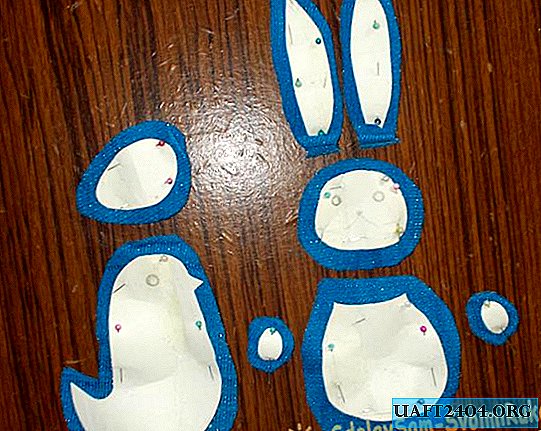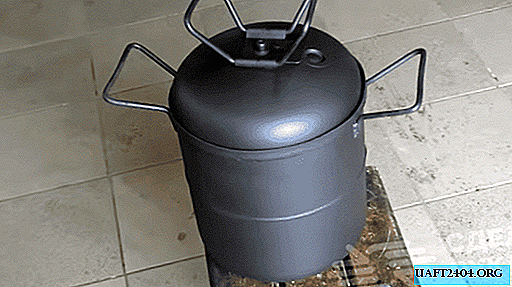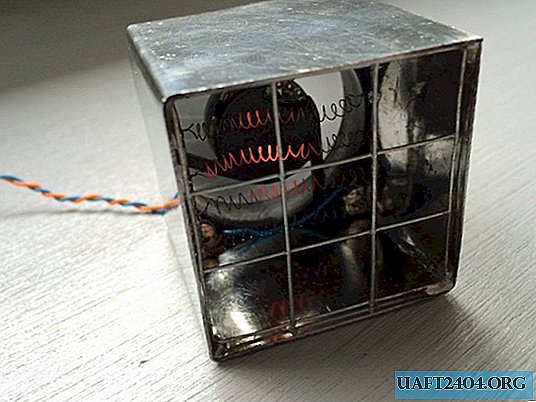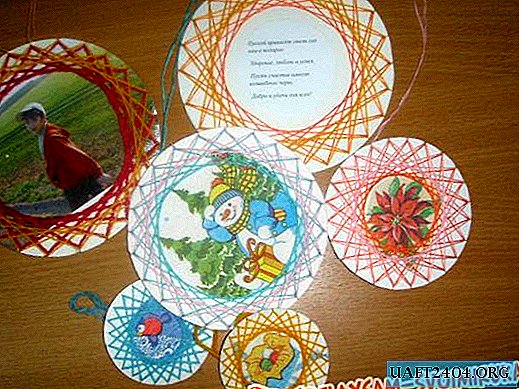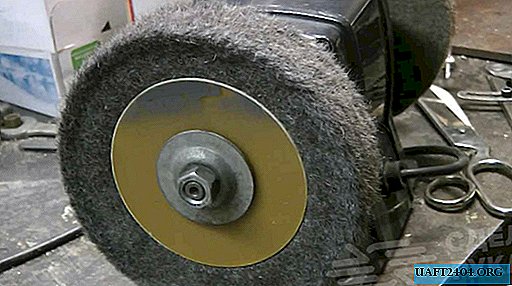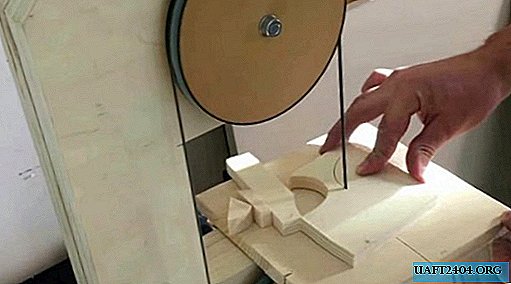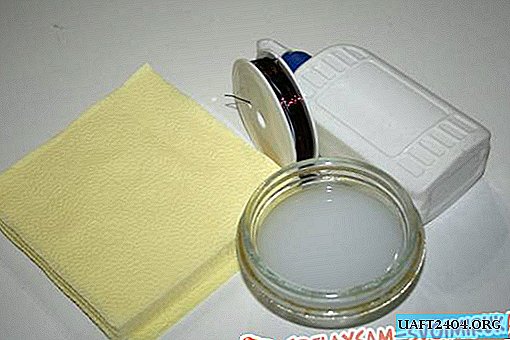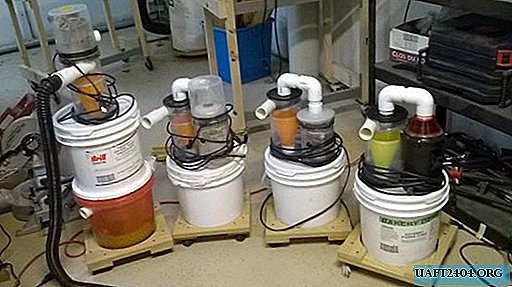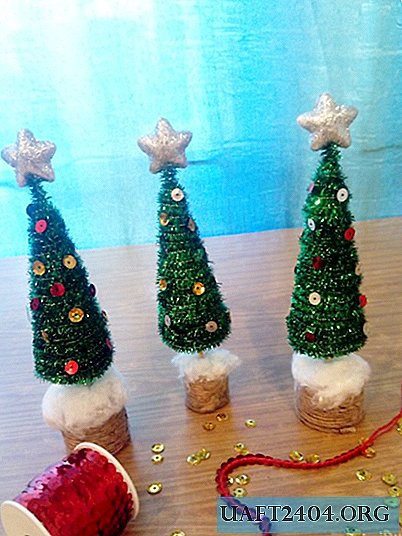Share
Pin
Tweet
Send
Share
Send
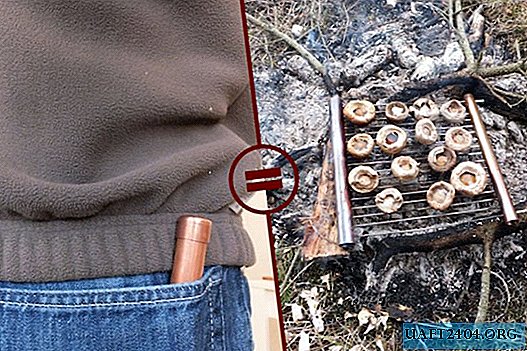
Tools and materials
We will need:
- 1. Hacksaw (or at least just a blade).
- 2. Pliers with wire cutters.
- 3. Drill and drill.
- 4. Universal knife.
- 5. File (or sandpaper).
- 6. The line.


Of course, this list can be changed, and no one bothers you to show a little imagination, but please do not forget to put on protective equipment and follow safety rules (otherwise you risk injuring yourself).
Materials:
You will need 2 tubes, while one must fit in the other. I used copper tubes with a diameter of 18 mm and 15 mm. In principle, any metal is suitable, but I used copper, because such tubes are lighter, they do not deform strongly under the influence of fire, have thin walls and, most importantly, I had them in abundance (residues after working on a heating system for the house), therefore, they cost me nothing.
2 caps for a larger pipe (also available).
A little 2 mm spokes from a bicycle wheel. I can not indicate the exact number of knitting needles, later you will understand why. Knitting needles should be made of stainless steel - food will be fried on them.
Tip: if you have a bicycle repair shop nearby, ask them about the knitting needles - you can get them for free (I personally had to pick a wheel from my old bike for a long time).
Measurements:
Everything is quite simple here, since the parts will have to be cut to a single size (to obtain a barbecue of rectangular shape).
Tip: The larger your brazier, the more needles you need. All knitting needles should fit on a smaller tube.
I took a step of 20 cm, as I calculated that about 25 needles with a diameter of 2.2 mm would fit in a tube with a diameter of 15 mm.
Cut off the tube
Saw off two tubes to an equal length and grind the rough edges. As I mentioned, I made them 20 cm long.





We measure, mark and make holes
Now that you have cut the tubes to the desired length, you need to mark and drill holes for the needles.






Cut the needles to the desired length
You have the right number of knitting needles, and you just have to count the holes. The spokes should also be the same length, as they should evenly fit into the grooves you drilled.






Tip: you will need 2 knitting needles with an original thread and a nipple on one end and bent at an angle of 90 ° on the other, so that their length should be about 5 - 10 mm longer than the rest. Please keep this in mind!
Getting started assembly
I do not want to lie to you: it is not so easy to do the first time without the necessary dexterity and skillful hands.




We disassemble and pack our barbecue
Everything is very simple here - we unscrew the nipples at the ends of the extreme knitting needles, and the whole structure disintegrates itself. Packing it is also not difficult.






Final thoughts
So, as you yourself have seen, everything is not so complicated.
Addition # 1: some of you have expressed concern that copper emits harmful gases when heated. I can not refute this from a scientific point of view, but I could not find a single source on the Internet that could prove this thesis, therefore: future comments a la "copper emits toxic fumes when heated" will be ignored until A link to a reliable source will be posted.
Supplement No. 3: The site of the Center for Disease Control and Prevention about copper vapors says the following: "Gas can be released at copper and brass plants and in the production of copper alloys." Given the melting point of copper or copper alloys, we can argue that there can be no talk of any harmful emissions over the fire.
I am not very friendly with the language, so in some places my speech may seem incomprehensible, so do not hesitate to ask questions or ask to take a photo - I will be happy to help!

Thank you for your attention and have a nice day!
source
Share
Pin
Tweet
Send
Share
Send

